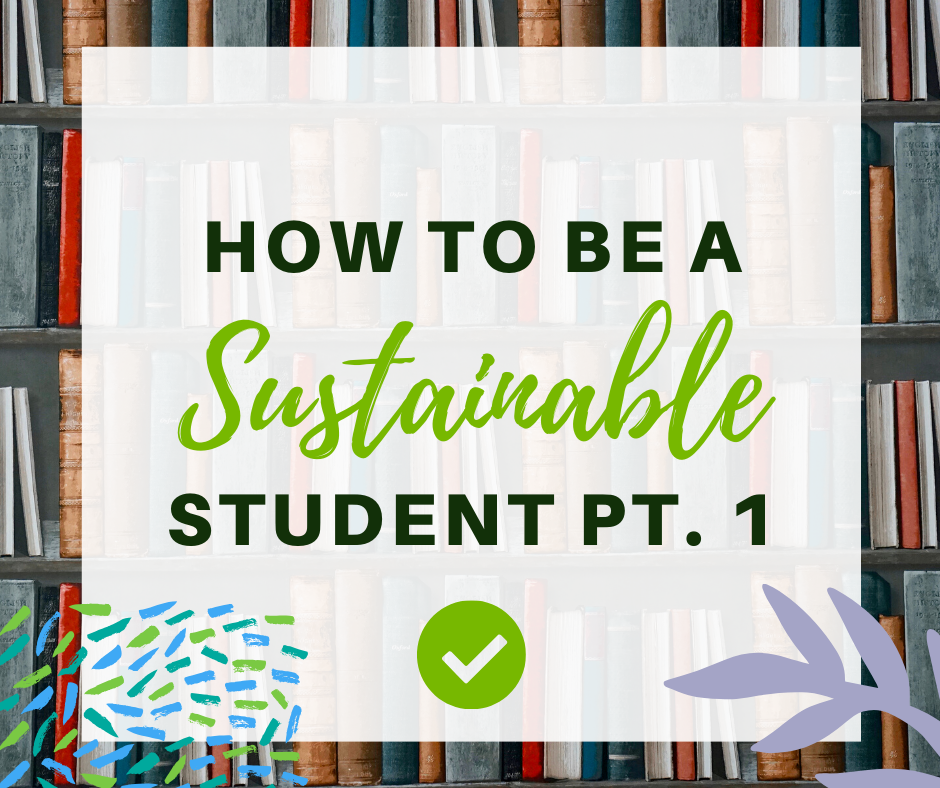As students of the next generation, it’s important to start making a difference and impact on being sustainable, eco-friendly, and green for our environment. If we all start now, it will greatly influence future generations and make it a norm to start becoming more aware of our surroundings and mindful of what we consume and throw away.
Keep in mind that we aren’t perfect, we are trying to reduce, reuse, and recycle as much as we can. Any small difference can make a big difference if we keep doing it and influence others to join in too!
So here is a list of things we can do, as students, to help our earth and be sustainable students: (this is only 3, more will be coming soon!)
- Use the 3 R’s for paper
Note taking, homework assignments, doodling, and ect. Paper is a necessity for students to have in their bags for school. But too much paper being made because of the high demand means that too many trees are being cut down. Then there’s the fact that there isn’t enough time for them to grow back to replace all that we have cut down. So in order to slow down our consumption and help earth out a bit, here are a few ways to reduce, recycle, and reuse paper.
– Reduce. Use less, like when you’re taking notes or doing an assignment. Try writing smaller and using up as much space as you can on one side of the paper. It might take a bit to get used to, but definitely try to use less. Challenge yourself to not reach for another sheet of lined paper until the one you’re using is completely filled.
- Recycle
This sounds easy, just recycle all those past assignments and notes, right? Well yes, but also be careful. Paper is recycled by grounding it back to a pulp and remade into paper again. However some types of papers like soiled paper, sometimes shredded paper, plastic, wax, and foil-coated papers can’t be put into the recycling bin. For soiled papers, they can contaminate the paper making process by leaving all the dirt and oils in the paper pulps. With that, they would have to throw it all away into the landfills, which defeats the whole purpose of putting it in the recycling bin. In addition, it can harm the workers in recycling plants because it can bring in bad bacteria and molds. So be careful not to soil your assignments or else you will have to throw it away into the trash. This also applies to anything made of paper, like paper plates, napkins, paper towels, and ect.
According to Earth911, shredded paper, which is mainly done to get rid of confidential information, can be composted (This can help nullify nitrogen-rich decaying foods in compost piles, which is a good way to reuse shredded paper.) or recycled but check with your local recycling program first before doing anything.
Then finally, any papers with a bit of wax or foil-coats are not recyclable. This is hard to separate during the paper process, so it’s best to not put these types of papers into the recycling bin. This includes wax cardboard milk and juice containers, oil-soaked paper, pet food bags, sanitary products or tissues, stickers and plastic laminated paper such as fast food wrappers according to Earth911.
All in all, double check with your local recycling program for more information on how and what you should do to recycle some of these tricky papers. This is also a good chance for you to learn more about your community’s programs, which can help you become a better adult in the future.
- Reuse. Now there are a few ways you can do this.
First, you can reuse your own papers for another purpose. For example, if you’ve used only one side of a piece of paper, try to use the other side for something else. This could be as scratch paper, a to-do list, or anything you want, be creative!
The other thing you could do is giving your notes to someone else. Like if your siblings or friends are taking that class after you, you could lend them all your notes to help them out, because technically you don’t need them anymore. Plus, this could help them out on saving paper for other things like homework assignments instead of rewriting those same notes again.
Lastly, for all those notebooks/tablets/journals, they can also be reused again if you still have a lot of/some blank paper left over from those classes. Simply take those other papers out or you can divide the notebook and reuse that same notebook again to save on paper. This way, you can save on money, save the trees from being all cut down which contributes to global warming, and save companies from using energy to make more paper for you to use.
Works Cited:
Bartkowski, Ann. “Types of Paper That Cannot Be Recycled.” Our Everyday Life, 11 Mar. 2019, oureverydaylife.com/124467-types-paper-cannot-recycled.html.
“How to Recycle Computers.” Earth911.Com, earth911.com/recycling-guide/how-to-recycle-computers/.
Lavendaire. “10 Ways to Reduce Waste | Zero Waste for Beginners.” YouTube, 18 Oct. 2017, https://www.youtube.com/watch?v=OagTXWfaXEo.
ProCon.org. “ Tablets vs. Textbooks.” ProCon.org, 4 Dec. 2018, tablets-textbooks.procon.org/.
Studyquill. “Eco-Conscious Swaps For Students.” YouTube, 10 Feb. 2020, https://www.youtube.com/watch?v=jT43USHegEs&feature=youtu.be.


viagra rx viagra online with paypal viagra paypal